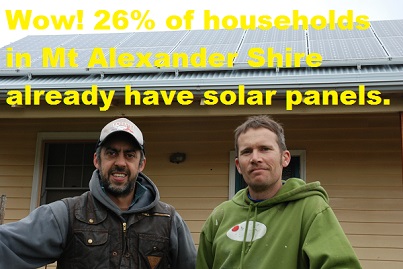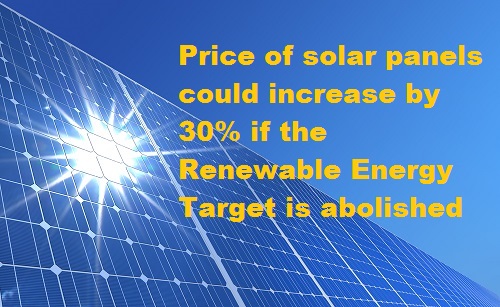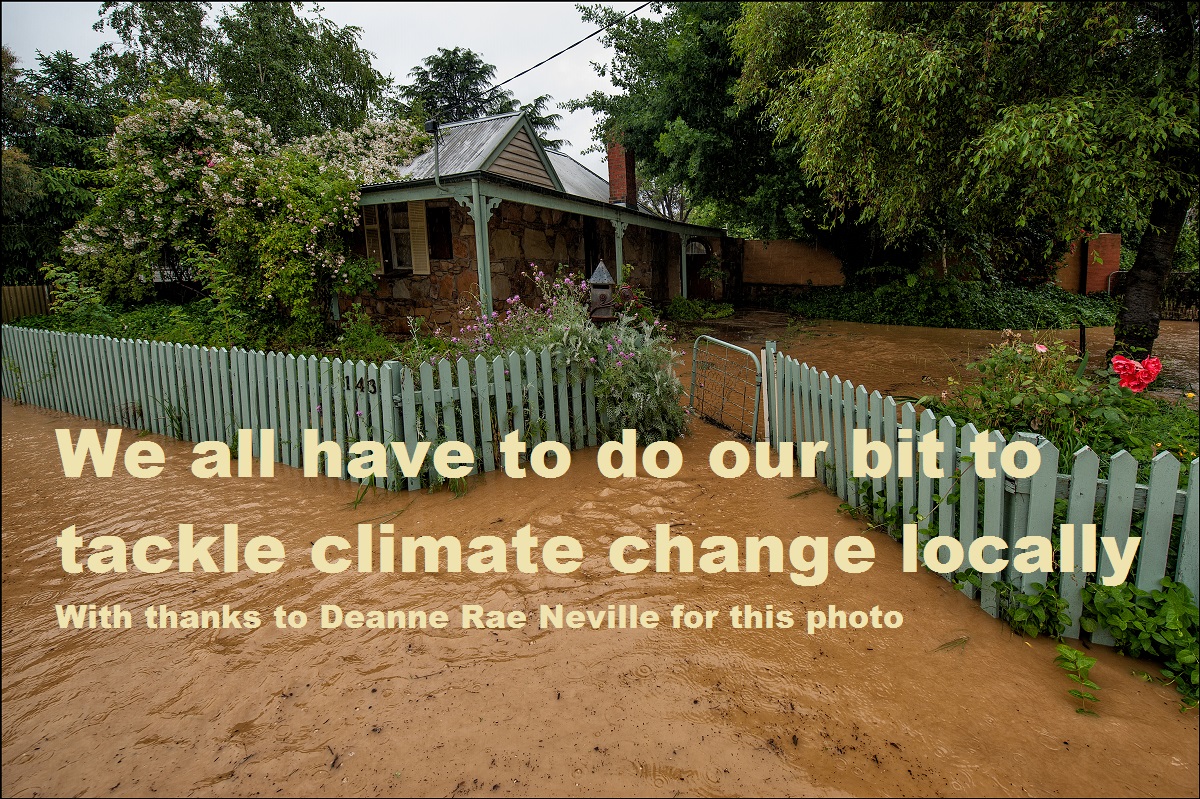The global solar industry is booming, with an average growth rate of around 20% over the past four years. Solar is now a significant part of the global energy supply here and overseas. In South Australia, 25% of homes are now powered by solar, with an average size of 4.8Kw or around 25-30 panels per house (see table). In Queensland it’s around 22% of homes whilst in Victoria it’s 10%. Remarkably in our Shire, the penetration is already 26%.
Solar PV in Australia, 2013
State/Territory |
# PV Systems |
Capacity (MW) |
% dwellings with solar power |
| ACT | 14,000 | 38 | 10 |
| NSW | 252,000 | 633 | 10 |
| NT | 3,000 | 11 | 4 |
| SA | 160,000 | 450 | 25 |
| TAS | 18,000 | 55 | 9 |
| VIC | 201,000 | 532 | 10 |
| WA | 149,000 | 334 | 18 |
| National | 1,157,000 | 3,039 | 14 |
| Mount Alexander Shire | 2250 | 6 (approx) | 26 |
Source: Renew Economy 4th Dec 2013; Powercor, personal communication, 28th March 2014
Solar PV is also helping to stabilise our energy system. During the heatwaves of January 2014, it supplied around 6% of demand, thereby allowing the electricity retailers to avoid blackouts.
Government rebates and feed-in tariffs have certainly helped fuel the boom, developments in solar technology have also played a large part: in recent years the actual cost of solar pv has fallen by around 80%. 10 years ago, the cost of solar was over $10 per watt. Today, it’s much less than $2 per watt. The great bulk of the decrease has taken place in the last 2-3 years.
Already, for a new power station, solar is competitive with fossil fuels without any subsidy at all. That’s highly significant as the playing field is not a level one: solar’s main competitor, coal, is still not paying the cost of its pollution.
Not surprisingly, the solar boom has come at a cost to the electricity generators and the coal companies. Solar has actually helped to cause the level of demand for fossil fuel-based electricity to fall which has in turn resulted in a fall in the wholesale price of electricity and a lower demand for coal.
Because solar’s peak production takes place during peak consumption hours, the time when the big generators make most profits, the boom has been more damaging to the generators’ business than might have been imagined. As a result, the generators and the coal companies are doing everything they can to stop the progress of solar and other renewable forms of energy. And sadly, in Australia at present they have the federal government and most state governments on their side.
Ultimately, however, most independent energy experts believe that big energy will go the way of letters, film developing and over- the-counter banking. The forces involved are too strong to be held back for long as the prices of solar panels and the batteries which will store energy will continue to fall.
Above all, solar is helping us cut our emissions of CO2. Each 2Kw rooftop solar system in Castlemaine cuts CO2 emissions by over 2 tonnes pa.



